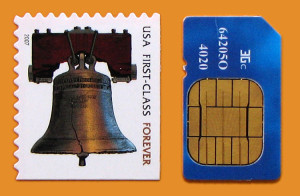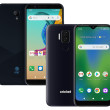SIM

Subscriber Identity Module
A small "smart card" used in GSM and LTE phones.
The SIM card contains a microchip that stores data that identifies the user to the network. In a sense, the SIM card is what links a phone to its phone number. The main data that performs this function is the IMSI, a long number stored in the SIM's electronic memory.
See: IMSI
The SIM also contains data used to encrypt voice and data transmissions, making it difficult to intercept calls and data using nearby radio equipment.
The SIM can also store limited phone book information - phone numbers and associated names. This feature is still available but rarely used with modern smartphones.
SIM cards contain electronic memory that can be used to store other important security and network-access data, such as authentication for payment systems. Phones can access this data as needed.
The SIM card, typically located under the battery - but sometimes in a tray on the side - can be removed by the user and placed in another phone. This will cause the new phone to instantly operate using the subscriber's existing phone number and account (unless the phone is locked.)
See: Locked Phone
SIM cards come in several sizes, including micro-SIM and nano-SIM.
See: Micro-SIM
See: Nano-SIM
All GSM phones and most LTE and iDEN phones use SIM cards. CDMA phones generally do not use SIM cards. The information is instead programmed directly into the phone. However, some CDMA phones for China and Latin America use a very similar type of card called R-UIM.
See: R-UIM
WCDMA / UMTS (3G) and most LTE (4G) phones use an technically upgraded version of SIM cards called USIM cards:
See: USIM
Last updated Jan 22, 2017 by Rich Brome
Editor in Chief Rich became fascinated with cell phones in 1999, creating mobile web sites for phones with tiny black-and-white displays and obsessing over new phone models. Realizing a need for better info about phones, he started Phone Scoop in 2001, and has been helming the site ever since. Rich has spent two decades researching and covering every detail of the phone industry, traveling the world to tour factories, interview CEOs, and get every last spec and photo Phone Scoop readers have come to expect. As an industry veteran, Rich is a respected voice on phone technology of the past, present, and future.



